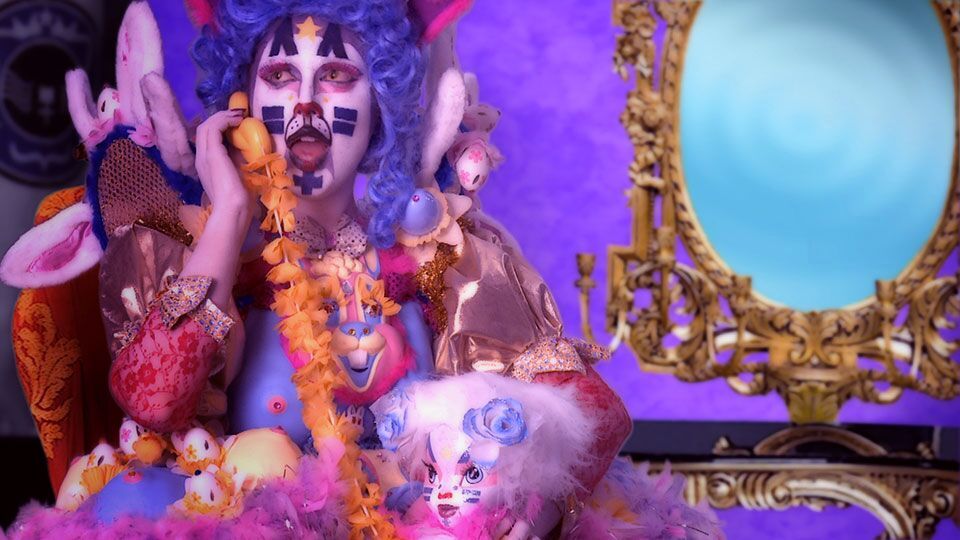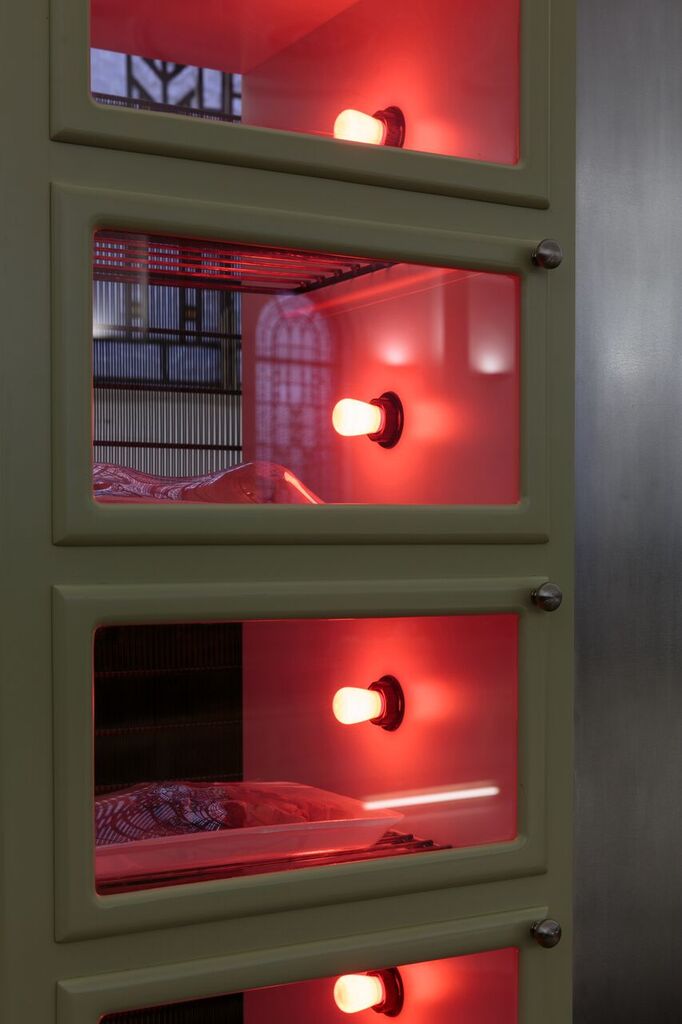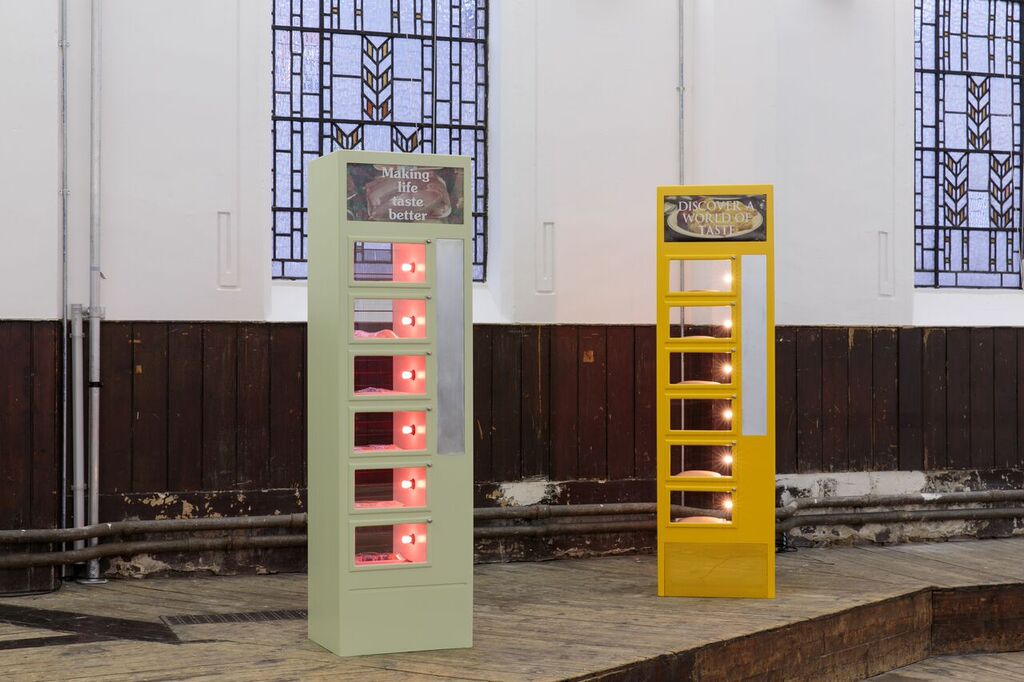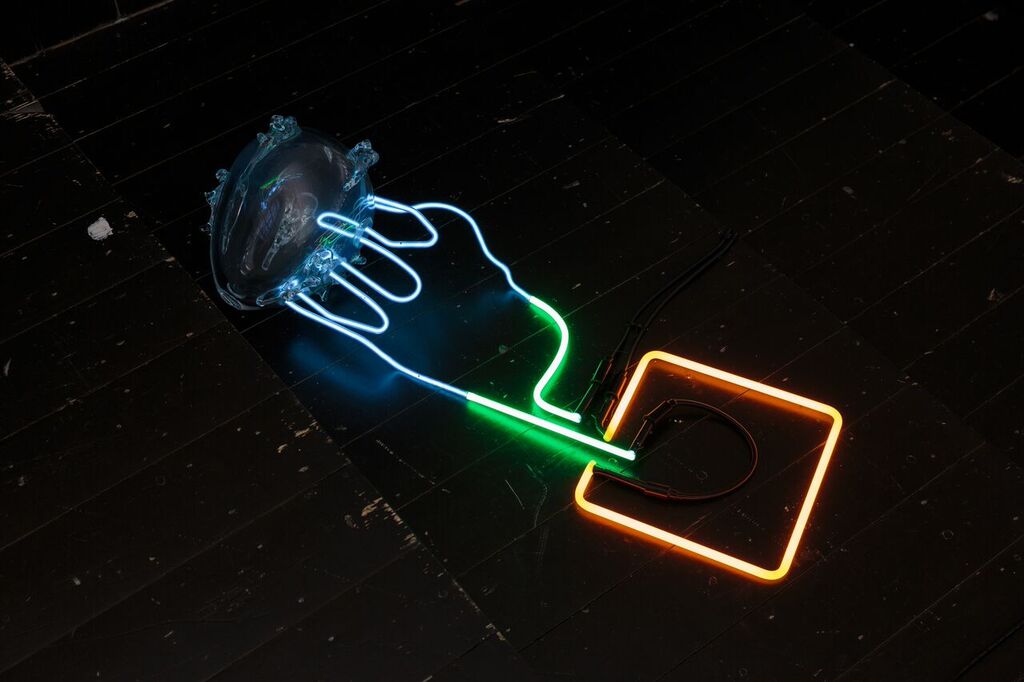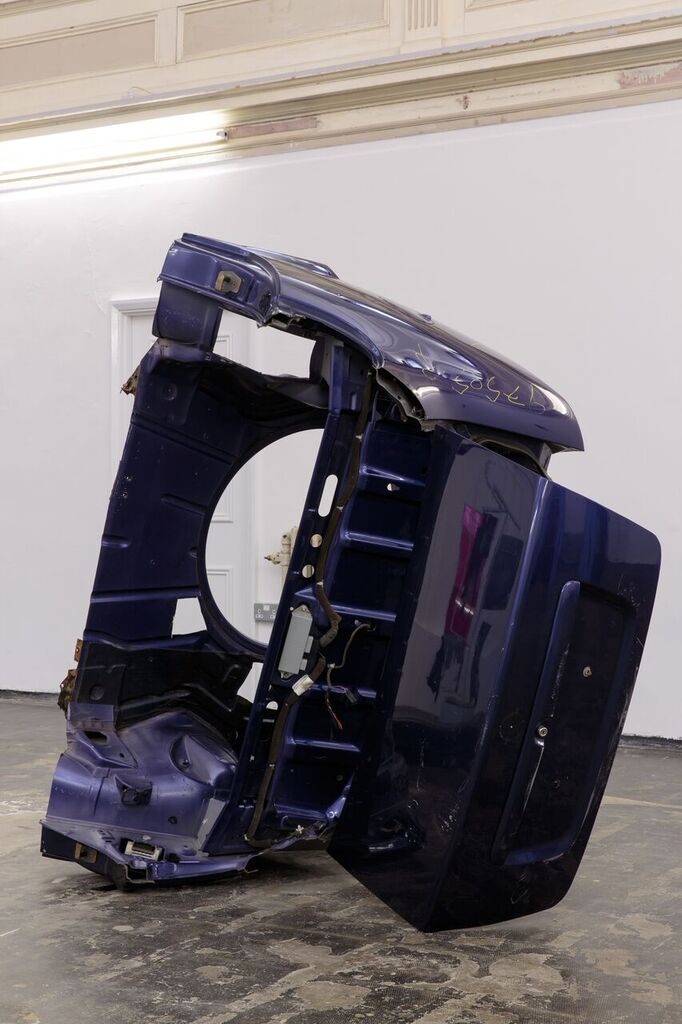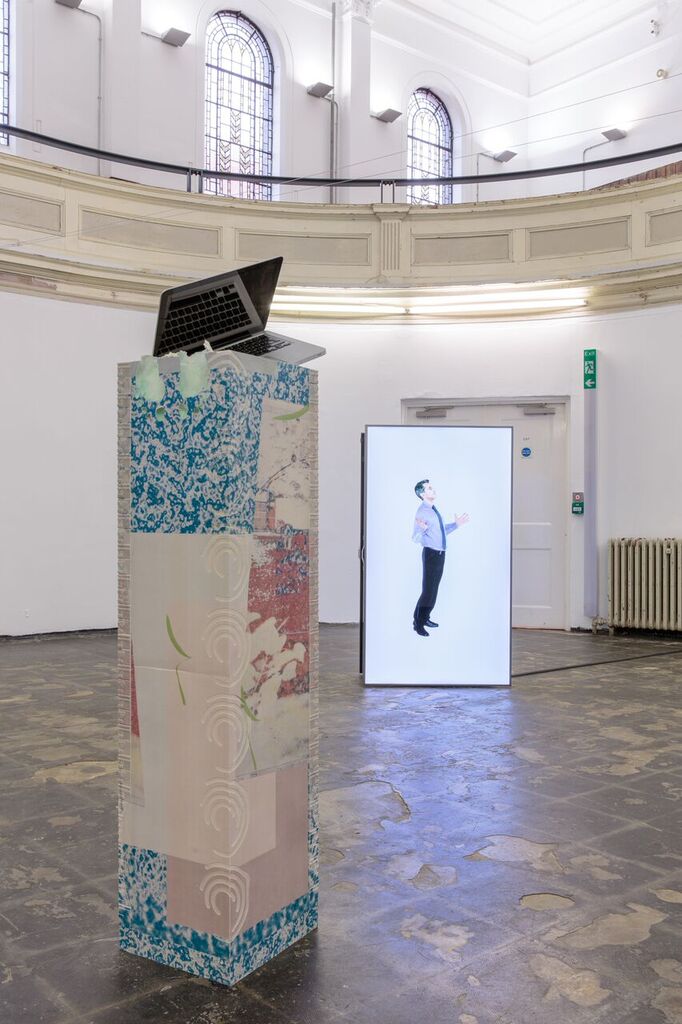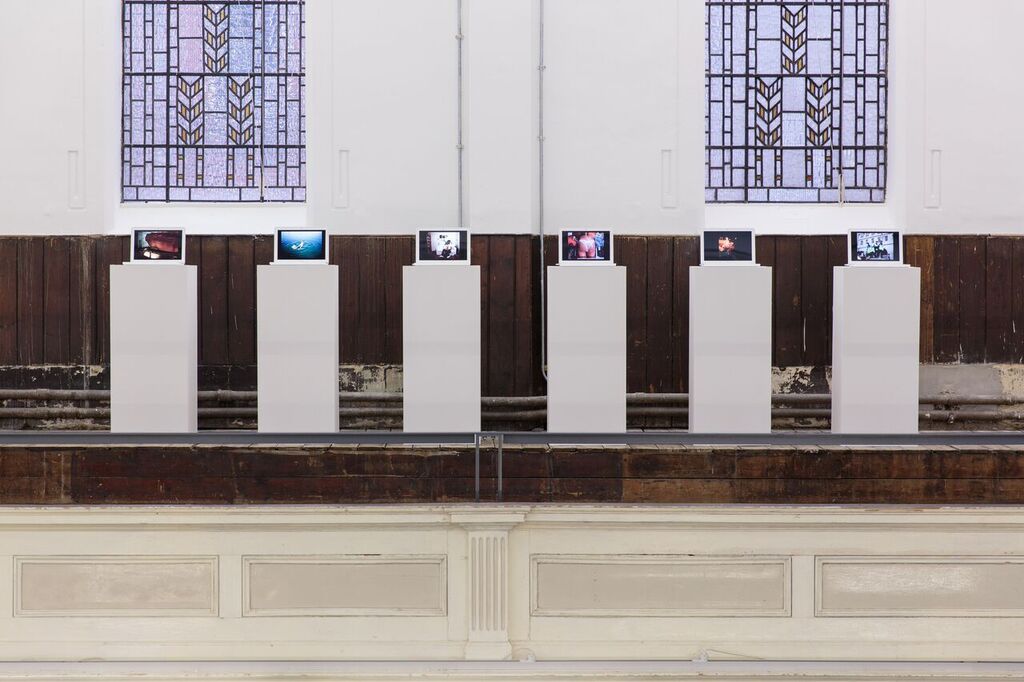Use/User/Used/ takes a varied, 360 degree look at exhaustion–at social demands to keep performing, at our rapid devouring of every earthly reserve, at the ideals of productivity and efficiency. Exhaustion here could be understood to fall into three categories; physical exhaustion, emotional exhaustion and exhaustion of resources.
This is the latest group exhibition from London’s Zabludowicz Collection, and is part of the space’s Testing Ground for Art and Education
season, curated by students from MA/MFA Curating courses at Goldsmiths University of London, Chelsea College of Art, and Sir John Cass College of Art at London Metropolitan University. We asked three key voices from the show–one artist, two curators–to discuss their response to each of these forms of exhaustion.
Kirsty White, exhibition curator on bodily exhaustion
I have a friend who is very good at looking after herself. Working with her recently, she demonstrated how easily she prioritised self-care. ‘I need prawns’, she’d say and return twenty minutes later with seafood tempura. I found this odd, I am so used to putting work before food or sleep. For a lot of people this is not a choice–temporary and zero-hour contracts can make long hours and strenuous labour obligatory.
I think Josh Kline’s Packing for Peanuts (Fedex Worker’s Head with Knit Cap) makes clear the socio-economic and health implications evident in this kind of working situation. Physical exhaustion becomes not only a possibility, but a real risk. Devoid of sleep, we are hollowed out, like Kline’s 3D printed portraits.
Luís Araújo, exhibition curator on psychological and emotional exhaustion
Each of the roles I performed while working on the Use/User/Used/ exhibition has a name: curator; student; brother; son; friend. They represent different skins that I accumulated, blurring the limits between my professional and personal life.
In Rachel Maclean’s Lolcats, 2013, I find a clear expression of this feeling of being multiplied and fragmented, ending up with an unstable identity. Maclean plays all the characters of the narrative, showing how permanent virtual connectivity and the acceleration of culture can lead to a general state of mental exhaustion. Like her, we shift daily between the role of damsel in distress, beauty pageant competitor and automated cyborg.
Lucy Tomlins, artist on exhaustion of material resources
People today buy with their eyes: Discover a world of taste, 2012 and Making life taste better, 2012 are mixed media presentations of food–raw lamb chops, pork and chicken–wrapped in cling film and placed behind glass in a vending machine; readymeals sitting unappealingly on the shelf of a heated food dispenser. Highly crafted, the food is carved out of marble and modelled out of plasticine and foam, but the suggestion of reality reflects the plastic quality of how food is presented in supermarkets and fast food outlets; the sanitised encounter fuelling a drive towards rapid (over)consumption whilst denying the phenomenological essence that makes the encounter fulfilling.
In an age of rampant digitisation and threatening dematerialisation, this work highlights, through its denial of it, that there is no substitute for the real and physical encounter, for unmediated exchanges with the ‘stuff’ of our world. Machines can create to a speed and pace that satiates even the largest appetite for more, more, more, but as sex shows us, pleasure resides very much in the body and the senses.
The superslick finish of the paint jobs on the vending machines draws you in to the illusion that they are real, but go behind the works and you notice that they are intentionally left ‘unfinished’, revealing the falsity of their mdf construction, the truth behind the surface veneer.
Use/User/Used/ runs at Zabludowicz Collection, London until 21 February
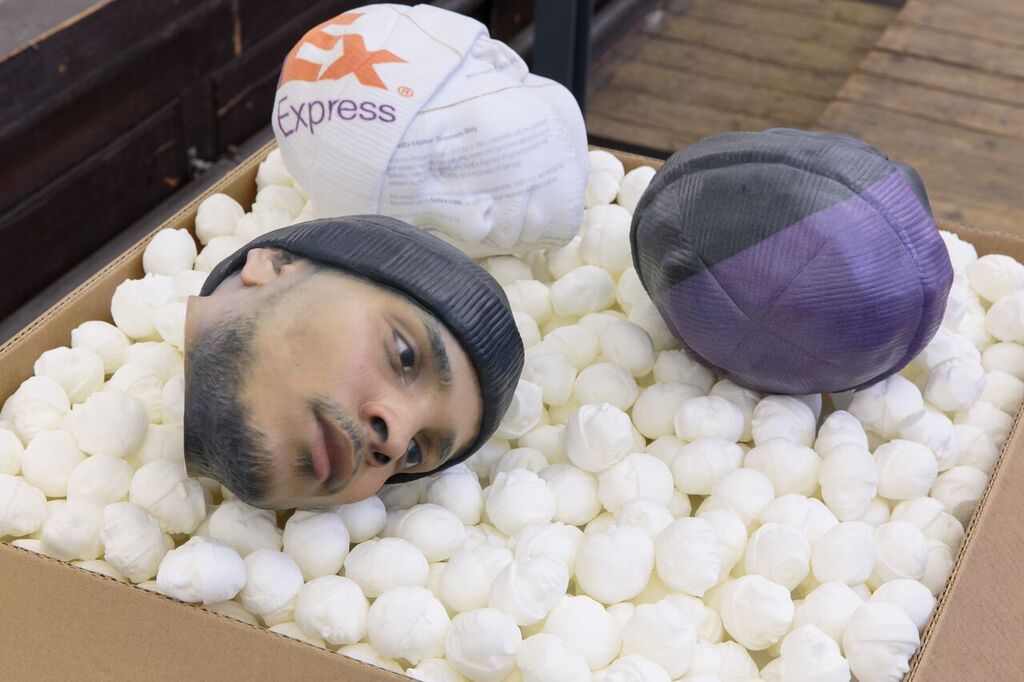
Josh Kline, Packing for Peanuts (Fedex Worker’s Head with Knit Cap), (detail), 2014. Photo: Tim Bowditch
